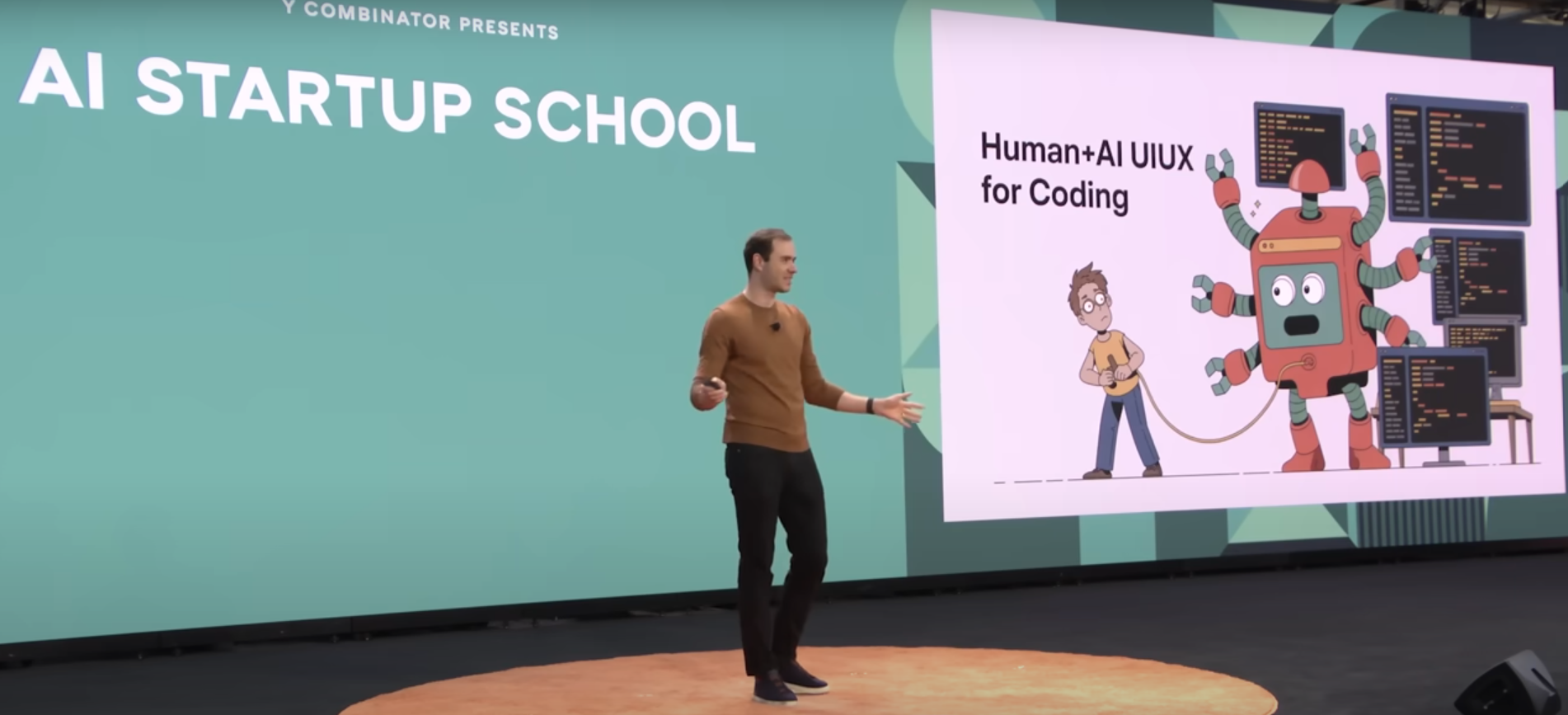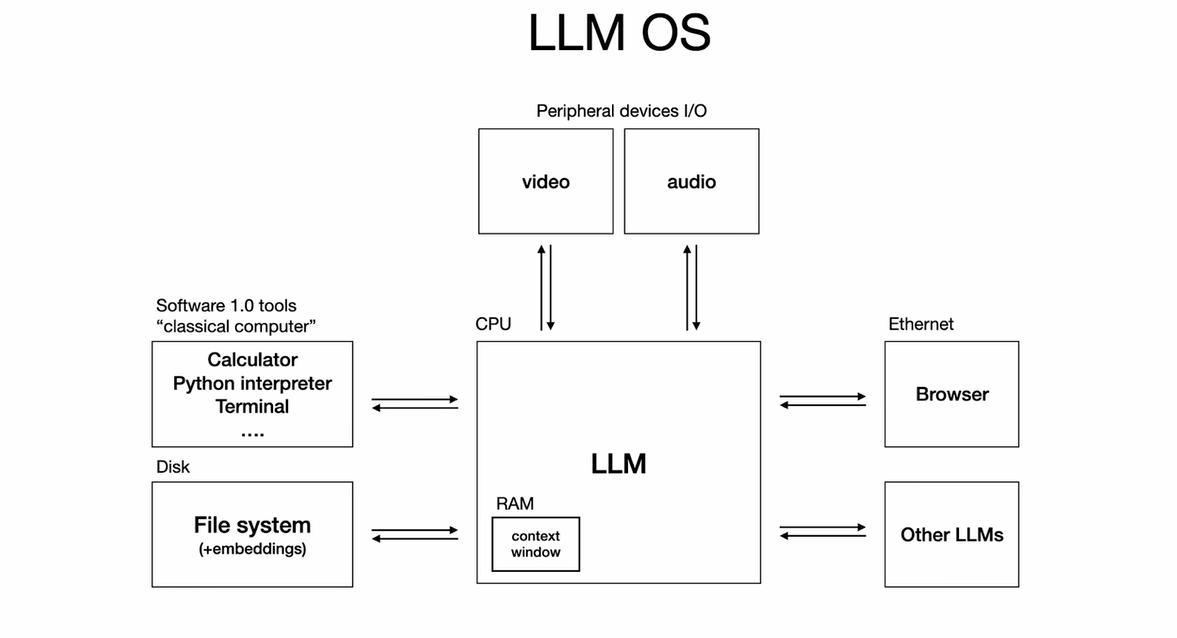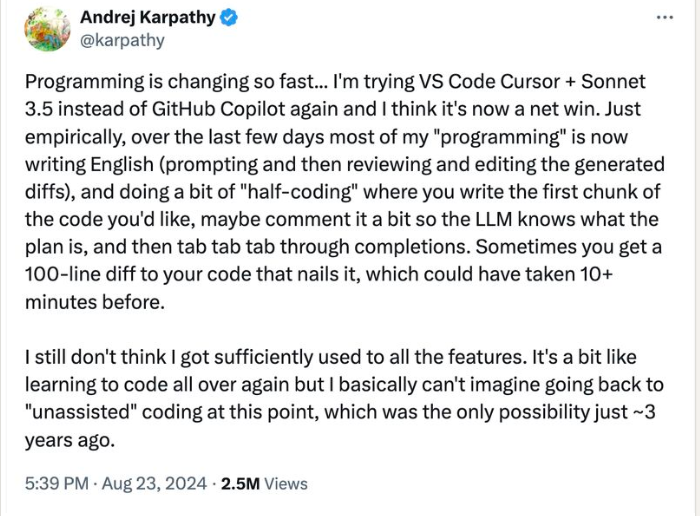From Vibe Coding to Precision Living
How we at Certainty-Lab are translating Andrej Karpathy’s Software 3.0 vision into everyday impact
When Andrej Karpathy—OpenAI co-founder and former head of AI at Tesla—took the stage at YC’s AI Startup School this month, he opened with a blunt declaration: “Software is changing again.” He wasn’t talking about incremental progress; he was announcing the dawn of Software 3.0, an era in which natural language becomes the primary programming interface and large-language models (LLMs) become the new computer. In Karpathy’s words, we are “back in the 1960s of computing,” only this time the terminals speak English and everyone with an idea is suddenly a developer.
For us at Certainty-Lab, the keynote felt less like a prediction and more like a mirror. The discipline Karpathy calls “vibe coding”—sketching intent in prose and letting AI draft the machinery—already powers our day-to-day work. Below we unpack his key ideas and show how we’ve baked them into the Sci-AI engine that drives our products, from Digital Dome to SpecCraft Pro.
1. Programming in English
Karpathy’s thesis is simple: in Software 3.0 you describe what you want, and the model figures out how. This shift collapses the barrier between domain experts and codebases, turning product managers, scientists—even high-school students—into first-class software creators.
How we apply it
- SpecCraft Pro accepts a single-sentence idea—“city-wide air-quality alert platform,” for instance—
and in under 30 sec' returns: - Architecture diagrams
- Serverless code snippets
- QA matrices
- A ready-to-deploy Bolt.new script
- All generated through structured dialogue with GPT, no 200-page PRDs, just description in, executable spec out.

2. Partial Autonomy over Full Automation
Karpathy cautions against unleashing fully autonomous agents before they earn trust. Instead, he recommends an “autonomy slider”: let humans decide when the AI drafts, when it acts, and when it must ask permission.
How we apply it:
AI-Powered Website Analysis Dashboard
- The model runs deep security and UX scans automatically.
- Before it rewrites production code, it pauses for human review.
- Users can ratchet autonomy from “suggest fixes” to “apply low-risk patches” as confidence grows.
SpecCraft Pro
- Green-light scripts are executable as-is.
- Amber scripts require approval.
- Red items flag compliance risks that only a qualified engineer may resolve.
3. LLMs as a New Operating System
Karpathy paints LLMs as cloud-based “people spirits”—systems that blend compute, memory, and reasoning into a single service you dial up on demand, almost like a utility.
Our layered stack
- Sci Knowledge Graph – Curated empirical findings and domain data powering our Precision-Living library.
- LLM-OS – GPT-4o family models, fine-tuned for each vertical (e.g., Digital Dome AI core).
- Autonomy Controller – Slider logic and guardrails that enforce safe operation (e.g., SpecCraft review gates).
- UX Surface – Chats, dashboards, alerts delivered through web/mobile fronts (e.g., AI Website Analysis dashboard).
This separation lets us swap models or extend context windows without rewriting upstream logic—exactly the “LLM abstraction layer” Karpathy predicts developers will need.

4. Vibe Coding in Practice
Karpathy’s MenuGen demo—an iOS app he built without touching Swift—shows how vibe coding unlocks creativity for non-experts. We’ve witnessed the same gains:
Digital Dome
Prototyped in five weeks by domain analysts who wrote geospatial intent in English.
AI produced serverless GeoJSON pipelines, outreach templates, and analytics that now can protect communities.
5 · Scientific Rigor Meets Rapid Build Cycles
Speed without rigor is hype. Every Certainty-Lab workflow embeds lab-validated protocols and real-time monitoring:
- Auto-generated QA matrices in every SpecCraft spec.
- Continuous certainty checks—each LLM call logs confidence; anomalies trigger review.
- Empirical feedback loops—our Experimental Ground A/B-tests each release against precision-living KPIs.
- This fusion of scientific method + vibe-coding velocity lets us promise precision living, not just plausible demos.
6. Building for the Third User: Agents
Beyond GUIs for humans and APIs for programs, Karpathy argues we must now design for AI agents that read docs, call endpoints, and bargain on our behalf.
Our documentation already includes:
- Structured examples with plain-language summaries.
- Explicit error catalogs and recovery steps.
- An upcoming llm.txt manifest so agents know the safest, fastest path through our systems.

The Certainty-Lab Compass in a Software 3.0 World
Karpathy ends with an invitation: “There’s still an ocean of software left to write.” At Certainty-Lab we navigate that ocean with a compass forged from science, strategic design, and the vibe-coding ethos:
- We democratize innovation by letting anyone articulate intent in plain language.
- We safeguard reliability with autonomy sliders and empirical QA.
- We shrink time-to-impact from quarters to days—delivering Digital Domes, SpecCraft specs, and AI advisors faster than traditional teams can schedule a kickoff.
Software is indeed changing again. Thanks to vibe coding, it’s changing for everyone, with everyone—and, at Certainty-Lab, with certainty.